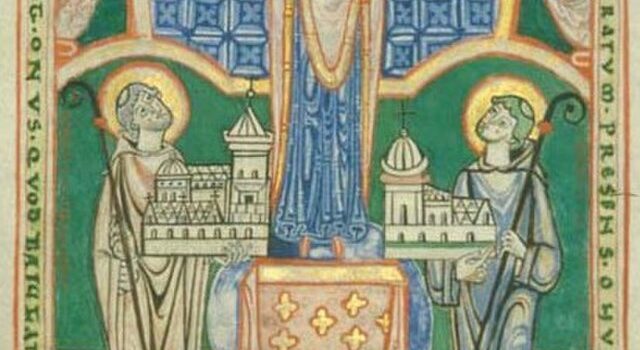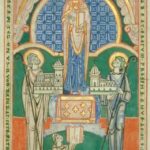St. Stephen Harding
Stephen was born in the eleventh century at Sherborne in Dorsetshire, England. He was educated at Sherborne Abbey and traveled to Scotland, Paris, and Rome. On the way home from his travel, he stopped at an abbey near Molesmes and was so impressed that he decided to stay. He joined the hermits who were under […]


 Stephen was born in the eleventh century at Sherborne in Dorsetshire, England. He was educated at Sherborne Abbey and traveled to Scotland, Paris, and Rome. On the way home from his travel, he stopped at an abbey near Molesmes and was so impressed that he decided to stay. He joined the hermits who were under Abbot St. Robert and Prior St. Alberic. In 1094 Stephen, along with four other monks, the abbot and prior, requested permission to leave Molesmes to find a more spiritual way of life. They received permission from Archbishop Hugh of Lyons who was the papal delegate to France. They founded Citeaux with twenty monks and Robert as the abbot. Alberic was made prior and Stephen the sub-prior. Later Robert left and Stephen was elevated to prior.
Stephen was born in the eleventh century at Sherborne in Dorsetshire, England. He was educated at Sherborne Abbey and traveled to Scotland, Paris, and Rome. On the way home from his travel, he stopped at an abbey near Molesmes and was so impressed that he decided to stay. He joined the hermits who were under Abbot St. Robert and Prior St. Alberic. In 1094 Stephen, along with four other monks, the abbot and prior, requested permission to leave Molesmes to find a more spiritual way of life. They received permission from Archbishop Hugh of Lyons who was the papal delegate to France. They founded Citeaux with twenty monks and Robert as the abbot. Alberic was made prior and Stephen the sub-prior. Later Robert left and Stephen was elevated to prior.
In 1109 Albert died and Stephen was elected abbot. The monastery had very few monks left as most had died and none had joined to replace them. Stephen immediately made strict regulations which discouraged new members and there was very little money coming in. The outlook for the monastery wasn’t good. To make matters worse, a mysterious illness killed off most of the remainder of the community. It was 1112, and there didn’t seem to be any hope of keeping the monastery open. Providentially, one day a group of about thirty men on horseback, led by a nobleman named Bernard, arrived at the monastery and requested admission. From that day forward the community flourished. In fact, by 1119, ten monasteries had been founded from Citeaux. Bernard was elected abbot of one of the monasteries named Clairvaux and Stephen drew up the rule for the order, which organized the Cistercians into an order.
In 1133, because of ill health and blindness, Stephen resigned. A year later he died. By the time of his death, Stephen had established thirteen monasteries. He was buried in the same tomb as his predecessor, Alberic, in the cloister of Citeaux. He was canonized in 1623.
Lessons
Stephen was a great organizer. It was he who instituted the system of general chapters and regular visitations. He also drew up the famous “Charter of Charity” which was a collection of statues for the government of all monasteries united to Citeaux. In 1119, this charter was approved by Pope Callistus II.
Prayer
Father, may we never lose hope, knowing that you are always with us. When we are striving to walk the narrow road, help us to persevere, knowing that you have a plan for each of us and that we need not fear. Amen.
Other Saints We Remember Today
St. Anicetus (175), Pope, Martyr
photo via Wikimedia Commons














